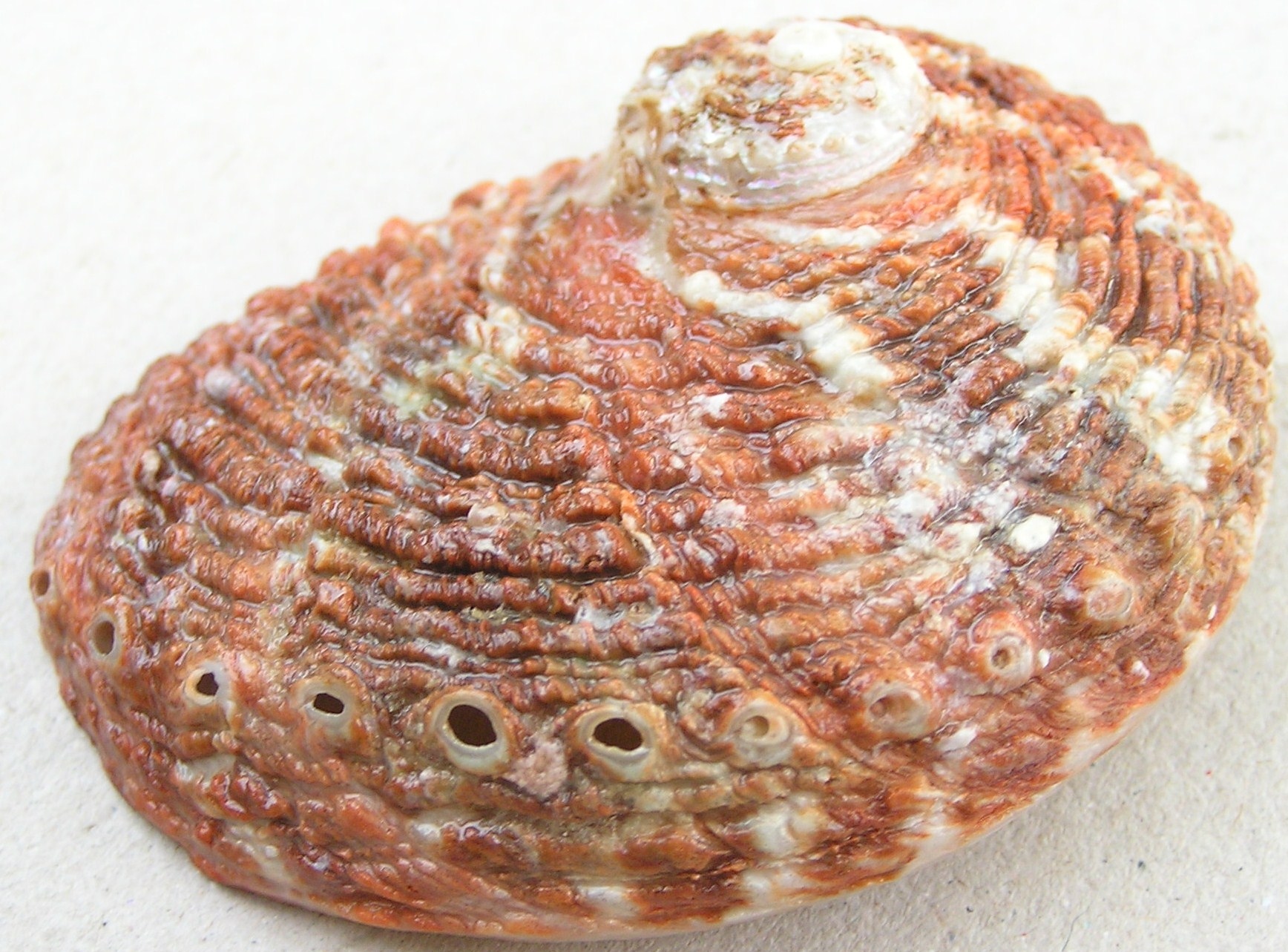Roe's abalone
(Haliotis roei)

Description
Haliotis roei, common name Roe's abalone, is a species of sea snail, a marine gastropod mollusk in the family Haliotidae, the abalones. The size of the shell varies between 50 mm and 120 mm. "The shell has a short-oval shape. The distance of the apex from the nearest margin is somewhat over one-fifth the greatest length of the shell. The sculpture consists of strong unequal spiral cords crossed by radiating folds. The 7 to 9 perforations are rather small and a little raised The right side is straighter than the rounded left margin, and the back is depressed. The color of the shell is scarlet-red, more or less marbled with olive-green, painted with broad white rays. The spiral riblets are numerous, unequal, separated by deeply cut grooves. Their summits are cut by fine radiating striae. They are further rendered uneven by more or less developed folds radiating from the suture. The spire is rather elevated. The inner surface is silvery, very iridescent, with pink, green and steel-blue reflections. The columellar plate is narrow, obliquely truncated at its base." This marine species is endemic to Australia and occurs off Western Australia to Victoria. Haliotis, common name abalone, is the only genus in the family Haliotidae. This genus once contained six subgenera. These subgenera have become alternate representations of Haliotis. The genus consists of small to very large, edible, herbivorous sea snails, marine gastropod molluscs. The number of species recognized worldwide ranges between 30 and 130, with over 230 species-level taxa described. The most comprehensive treatment of the family considers 56 species valid, with 18 additional subspecies. Other common names are ear shells, sea ears, and, rarely, muttonfish or muttonshells in parts of Australia, ormer in the UK, perlemoen in South Africa, and the Maori name for three species in New Zealand is pāua. The shells of abalones have a low, open, spiral structure, and are characterized by having several open respiratory pores in a row near the shell's outer edge. The thick inner layer of the shell is composed of nacre, which in many species of abalone is highly iridescent, giving rise to a range of strong, changeable colors, which make the shells attractive to humans as decorative objects, in jewelry, and as a source of colorful mother-of-pearl.
Taxonomic tree:







